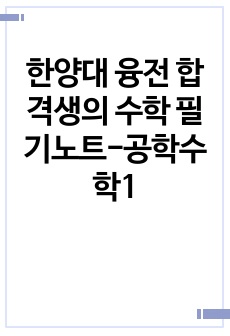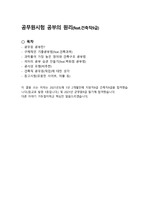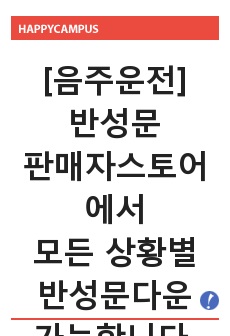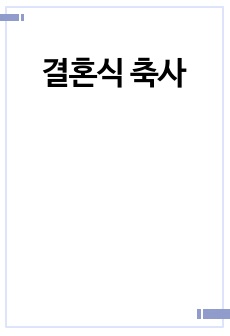1930년대 한용운의 불교 개혁론과 민족의식 고취
(주)코리아스칼라
- 최초 등록일
- 2016.05.03
- 최종 저작일
- 2014.06
- 34페이지/
 어도비 PDF
어도비 PDF
- 가격 8,100원

* 본 문서는 배포용으로 복사 및 편집이 불가합니다.
서지정보
ㆍ발행기관 : 동방문화대학원대학교 불교문화예술연구소
ㆍ수록지정보 : 불교문예연구 / 3권
ㆍ저자명 : 김성연
목차
I. 머리말
II. 1930년대 국내정세와 불교계 동향
Ⅲ. 식민지 불교의 극복과 총본산 건설
VI. 조선적 전통의 고양과 불교 대중화
V. 맺음말
한국어 초록
3·1운동 당시 민족대표였던 한용운은 1920년대 국내 항일운동의 지도자로서 활약하였다. 그러나 1930년대 초 신간회의 해체와 일제 의 만주사변으로 인한 국내외의 정세 변화는 한용운이 대외활동을 접은 채 심우장에서 집필활동에 전념하게 되는 외적 영향으로 작용 했다. 이 시기에 한용운은 냉철한 시국인식과 민족적 자각을 바탕으 로 불교개혁을 주장하는 글들을 많이 발표하였다. 이때의 개혁론은 1910년대『조선불교유신론』에서 주장했던 일반적인 불교근대화론과 는 달리 식민지 불교의 모순을 극복하고 조선의 사찰을 통일해야 한 다는 자주성에 기반하고 있다. 그리고 그 요지는 크게‘총본산의 건 설’과‘불교의 대중화’로 정리할 수 있다. 총본산 건설은 분산된 조선 사찰의 통일과 통제기관의 설립을 뜻하 는 것으로, 사찰 주지의 임면권(任免權)을 확보해야 한다는 자주성에 바탕을 두고 있다. 따라서 그 전제조건은 조선불교의 모든 권리를 철 저히 장악하고 있던 일제의 사찰령을 철폐하는 것이었고, 그 이론으 로서 서구 근대화의 특징인 정교분리의 원칙이 제시되었다. 그리고 정교분리에 따라 사찰령을 철폐하고 총본산을 건설하는 주체로서 불 교청년의 역할이 강조되었다. 불교 대중화는 경전의 한글 번역과 인출, 그리고 불교 잡지의 발행 사업에 의한 문서포교의 실천으로 요약할 수 있다. 일찍이 한글의 중 요성을 자각하고 평소 한글로 된 교리의 전파를 강조했던 한용운은 1930년대 초반 안심사 한글 경판의 인출사업을 주도적으로 이끌어 불교계뿐만 아니라 사회 일반에 큰 관심을 끌기도 하였다. 한용운의 불교 대중화 사업은 그 스스로‘조선운동’이라는 표현을 쓴 적이 있 었던 것처럼 문화운동의 일환으로 이루어졌다. 따라서 불교의 대중 화 주장도 조선적 전통의 인식과 실천운동을 바탕으로 전개되었다고 할 수 있다. 결론적으로 한용운의 현실 인식과 대응은 일제의 통제에서 벗어나 한국 불교의 자주성을 회복하는 것에 있었고, 바로 이러한 점이 당시 불교 교단에서 그의 개혁론이 지니는 역사적 의의라고 할 수 있다.
영어 초록
Yong-un Han, a national representative in March First Independence Movement, played an active part as a leader for national anti-Japanese movement in 1920s. However, the external change of domestic and foreign political affairs in accordance with disorganization of Shinganhoe and Manchurian Incident caused by Japan in the beginning of 1930s influenced on him to give up international activities but concentrate on his writing in Simujang(尋牛莊). In this period, Yong-un Han published many writings to suggest reformation of Buddhism based on awareness of the times and national awakening. The reformism at this time was different with general modernization of Buddhism suggested from The Essay on Korean Buddhist Reform(朝鮮佛敎維新論) in 1910s, and instead it was based on independence to overcome the contradiction of colonial Buddhism and unite the temples in Joseon. And the main ideas could be summarized largely as ‘establishment of headquarter’and ‘popularization of Buddhism’. The establishment of headquarter meant unity of diffused Joseon temples and establishment of control authority, that is, it was based on the independence securing power of chief priest in the Buddhist temples to appoint and dismiss. Therefore, the precondition was to abolish main temple ordinances legislated by Japanese completely dominating all of the rights of Joseon Buddhism, and the supporting theory was suggested as a principle of separation of religion and politics which was a mark of Western modernization. And Yong-un Han emphasized the role of Buddhist youth as main agent to abolish the main temple ordinances and establish the headquarter in accordance with the principle of separation of religion and politics. The popularization of Buddhism could be summarized as practice of missionary work through translation of scriptures to Hangul and publication business of Buddhism magazines. Yong-un Han, who was already aware of the importance of Hangul and usually emphasized the propagation of doctrine written in Hangul, attracted the strong interest of not only Buddhist society but also general society by leading the publication business of Ansimsa Temple’s woodblocks in the beginning of 1930s. The popularization business of Buddhism led by Yong-un Han was promoted as a way of cultural movement according to his quotation of ‘Joseon Movement’. Accordingly, the popularization of Buddhism suggested by him was also developed based on traditional consciousness of Joseon and practice movement. As a result, Yong-un Han’s awareness of and reaction to the reality were to escape from the control of Japan and restore the independence of Korean Buddhism, and this could be determined as the historical significance of his reformism in the Buddhist society in that times.
참고 자료
없음
"불교문예연구"의 다른 논문
더보기 (3/8)




